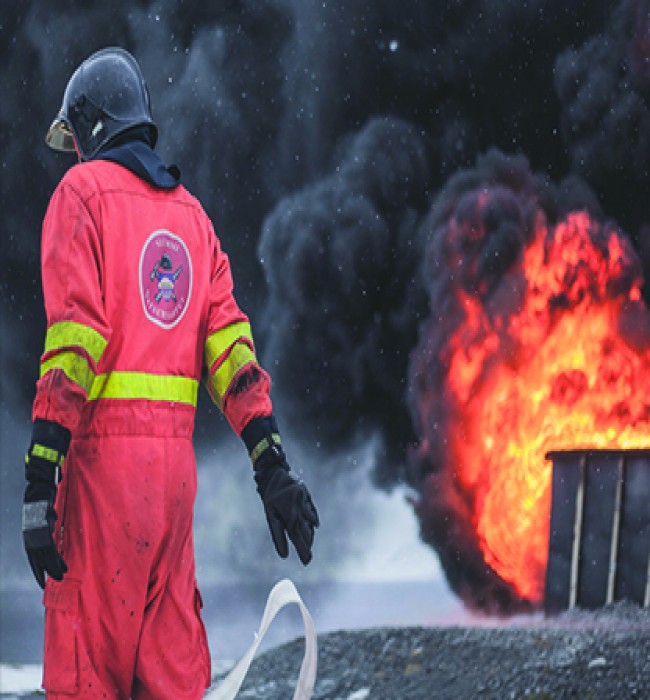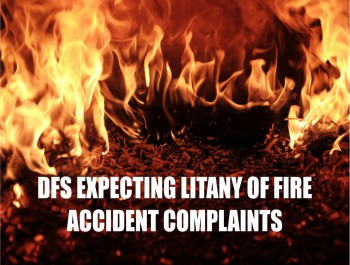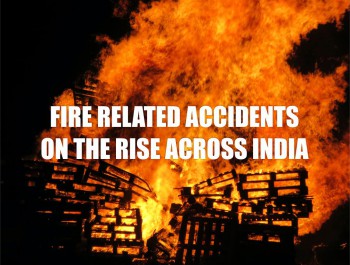
Blog
Beyond Carlton - Social Workers Learn From History & Stress On Fire Prevention Protocols
The Fire in Carlton Towers that claimed nine lives and injured scores of people in 2010 was the result of wanton disregard of building regulations and safety norms by at least two of the several owners of space in the 7-storey H-shaped buildingthat was constructed originally by SI properties and opened in 1999. While Bengaluru has now taken a commendable initiative to learn from this, most others remain in mangnificent ignorance of exigency and fire safety protocols relating to construction and maintenance in enclosed spaces to this day.
The iconic Carlton Towers in Bengaluru went up in flames in February 2010 and claimed nine lives and injured another 70. Three persons died due to fatal injuries after jumping from the top floors of the eight-storied building while six lost their lives due to severe burns and asphyxiation.
Following a complaint, an inspection was ordered in November 2014 in the same premises. Subsequently, the KFES inspection found flaws - blocked corridors, electrical metering in the lift lobby obstructing easy movement of occupants, electrical metering in corridors at certain floors resulting in shrinking of corridor area, etc.
Eight years thereon, the city now has a holistic fire safety blueprint to reduce casualties due to fire-related accidents to zero by 2023. It is a commendable initiative and one that others need to follow.
The target is to half the number of such casualties, which according to the National Crime Records Bureau stands at an average of less than six lives a year, every year from 2017. From 2011 to 2016, the city registered 29 deaths due to fire accidents.
The more recent incident occurred in January 2018 when five waiters died after a fire broke out at a restobar (on the heels of the horrific Kamala Mills case in Mumbai). Investigations carried out after the mishap found that there were no fire safety amenities such as fire extinguishers and fire exit staircases.
The safety audit plan has been prepared by Beyond Carlton, a city-based fire safety community that was formed following the Carlton Towers fire tragedy in consultation with the Karnataka State Fire and Emergency Services, and Janaagraha, a city non-profit.
“I believe that the contribution of Beyond Carlton in bringing about awareness in this regard has been highly appreciable and this particular report is a very technically sound report that we will integrate into all ongoing projects,” (sic) MN Reddi, Director General of Police in Karnataka State & Chief of Fire & Emergency Services, said in a statement.
Beyond Carlton was formed following a sustained citizen activism campaign led by Uday Vijayan, who lost his 10-year-old son in the mishap. He along with other citizens who lost their dear ones in the fire started posing questions to the authorities.
Recent results of the collective’s effort compelled the Karnataka government to amend its fire safety laws following a Public Interest Litigation it had filed in the High Court in 2011.
Speaking about the necessity to media, Uday said, “I feel our attitude towards fire safety as a nation has always been reactive. So now at the back of the Mumbai pub fire, we started checking pubs everywhere. Now if we have an incident of hospital fire, the same thing will follow.”
Uday added, “We felt the need for a greater focus on fire prevention rather than on firefighting. Firefighting is really reactive, most often it’s really late. The idea of the blueprint is how dowe become more proactive at looking at fire prevention.”
He stresses, “The issue is that it’s a team game… you need all the stakeholders, like the BBMP, BESCOM, etc., to participate in it. We as citizens do not have the authority but we can be catalysts for change.”
The conflagration in Carlton Towers that claimed nine lives and injured scores of people in 2010 happened due to wanton disregard of building regulations and safety norms by at least two of the several owners of space in the seven-storey H-shaped building that was constructed originally by SI properties and opened in 1999.
There were at least three major and glaring violations of safety regulations by these two “unscrupulous” owners, an informed source with access to building plans and layout told The Hindu on condition of anonymity at the time of the incident. “Carlton Towers was a very well designed building. However, on most floors, the wide corridor separating office units on either side was encroached upon to form one large office space that obviously commanded much higher rents. The exit routes located at the end of each corridor were locked. This made it impossible for people to escape”.
The second violation, was the installation of 10 to 15 diesel generators on the terrace to power the telecom towers there. These towers rake in huge rentals for the owner of the terrace. “Had the terrace not been locked, people could have gone there to escape the smoke,” the source explained. The heavy generators threatened to compromise the building structurally; but worse still, several barrels of diesel stored on the terrace could have gone up in flames had the fire spread.
The third set of violations is on the ground floor where one owner had occupied common area illegally, and has built walls in areas designated as open space in the original plan and sale deed.
Moreover, illegal shops and structures had come up on the ground floor, and the emergency staircase between the TGIF and the Reliance outletwa locked most of the time. “There is even a grill built across the stairwell, establishing illegal possession,” said the source. Fire personnel lost a precious half an hour because one of several illegal hoardings in front of the building blocked access for the fire engines. “I’m not surprised at all that this happened. The police have arrested three minor functionaries, whereas it is the result of simple and plain greed on the part of the two majority owners,” the source said. “If the fire exits were open, everyone could have just walked out.”
“The original building had ample ventilation and a situation where people had to jump out could never have arisen,” said Kamal Gupta, original builder.
BETTER LATE THAN NEVER
Bengaluru, February 2: In what must be the first for any city in India, Beyond Carlton released the five-year fire safety blueprint for Bengaluru, in consultation with the Karnataka Fire and Emergency Services Department. Beyond Carlton’s initiative for fire safety that stemmed out of the Carlton Towers fire tragedy of 2010 appears comprehensive and result oriented.
The blueprint has drawn a five-year roadmap from 2018 to 2022, which includes capability building, regulations and compliance, and awareness creation.
Among its key recommendations are introducing a retrofit policy for older buildings, linking property tax payment and fire No Objection Certificates, introducing a Public Private Partnership policy for private agencies to partner for new fire stations and monitoring, making burns wards compulsory in well-equipped hospitals, and developing protocols for inter-agency coordination. The plan also pushes for adoption of technology in a big way, including a tech upgrade that enables fire truck screens to see building plans.
The blueprint comes close on the heels of a string of fire tragedies across the country in the past one month, including at Kailash Bar and Restaurant in Kalasipalya, which resulted in the death of five employees. It is likely to have an impact on fire safety policies in the State.
M.N. Reddi, Director General of Police, Karnataka Fire and Emergency Services Department, in an audio message, said the report would be integrated with all ongoing projects as well as the KSAFE (Karnataka Safe) projects that the department is planning in the coming five years.
“The goal is to see a 50% reduction in injuries and property loss due to fire accidents, and ensure zero deaths in fire accidents in Bengaluru by 2023,” said R.A. Venkitachalam, Member, Executive Council, Beyond Carlton.
“The blueprint is all about making smart choices. For instance, bars come under the Excise Department. They are told to have only one entry and exit. Perhaps, that is a good thing for the Excise Department, but it is definitely not good for fire safety. So smart choices can be made in implementation,” he explained.
Another example was of old buildings. “We have buildings ranging from 300 years old to two years old. The National Building Code (of India) came into effect in 1985, and was revised in 2005 and 2016,” he said, explaining why the blueprint recommends a retrofit policy.
Email : sales@prolite.in





